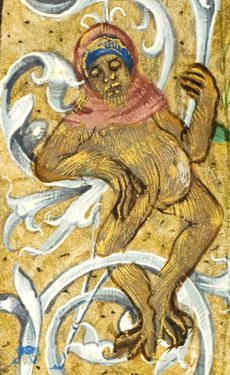This year marks the twentieth anniversary of the publication of Image on the Edge: The Margins of Medieval Art (London: Reaktion Books, 1992) by University of Chicago art history professor Michael Camille (1958-2002). This groundbreaking work looked at the "lascivious apes, autophagic dragons, pot-bellied heads, harp-playing asses, arse-kissing priests and somersaulting jongleurs to be found protruding from the edges of medieval buildings and in the margins of illuminated manuscripts." Camille studied the uncommon: the strange, remarkable, and extraordinary images at the edges of the medieval world, bringing to light to the confluence of the serious and the playful, the sacred and the profane.
While Image on the Edge concerns the medieval, the serious and the playful also converge at the University of Chicago. A thriving carnival of quirky and boisterous activities complements the serious scholarship that takes place at the University. Students are defined not only by cutting- edge research and earnest study, but also by scavenger hunts, superstitions, streakers in sneakers, and dance marathons.
To explore the symmetry between these margins of academic life and medieval margins, "On the Edge" pairs marginalia in medieval manuscripts with photographs of life at the University. These photographs, taken by current students and recent alumni in response to a call for entries, capture the campus and student body at a particular moment in time. The photographs show what happens outside of the classroom at the University of Chicago, highlighting quintessential traditions such as the Scavenger Hunt. A quest beloved by students and representative of their ingenuity and unconventionality, this largest scavenger hunt in the world has been held every May since 1987 and is notable for feats such as students building a nuclear reactor from scratch.
The manuscripts featured in "On the Edge" are drawn from the Special Collections Research Center and date from the thirteenth to the sixteenth centuries. Their origins span Europe, including modern-day France, England, the Netherlands, Germany, Italy, and Armenia. From prayer books to textbooks, from poetry to politics, despite their diversity in content and style these manuscripts all bear images and texts in their margins. For Camille the margins of the medieval manuscripts were at the edge of a hegemonic system of the book, both spatially, in terms of layout, or mise en page, and ideologically, in terms of their departure in content from the central text. At the edge of this system, marginal images challenged the central text through parody and play.
Some of the marginalia featured in the exhibition are hybrid monsters and playful monkeys such as those discussed in Image on the Edge, but many are notes, diagrams, coats of arms, and decorations. The margins were a space for scribes, artists, and readers alike to engage with the manuscript. Marginalia served many purposes: they made the manuscript easier to use and understand, personalized it for the owner, made the text more interesting and memorable, or parodied the texts and images in the center.
Just as the images and writings on the edges enrich the manuscript, so too the activities and traditions outside the classroom enrich the University, becoming integral to its identity. "On the Edge" invites viewers to contemplate the juxtaposition of manuscripts and photographs of campus life, to compare one margin to another, and to discover how the medieval resonates with the modern.

